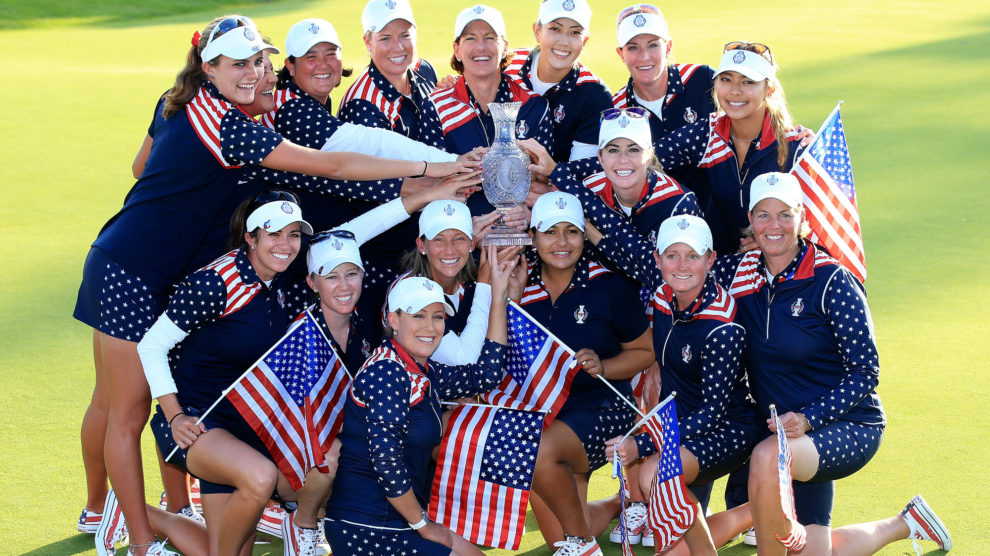The Solheim Cup happens every two years (it's a biennial event), pitting 12-woman teams representing the United States and Europe against each other in 28 matches over three days to determine a winner.
How Solheim Cup teams are picked
Each team is headed by an appointed captain, with the LPGA selecting the United States captain (Stacy Lewis in 2023 and 2024) and the Ladies European Tour picking the European captain (Suzann Pettersen in 2023). The host team alternates each match, as well, with the matches played in odd-numbered years.
The two teams are determined by qualifying systems created by the captains and co-owning organizations.
The American team is currently crafted from 9 automatic qualifiers, with 5 players earning a spot on the team based on a points system that spans approximately 20 months from March of the off-year in the cycle to the end of, in 2023, the CCPKC Women's Open in the final year of the cycle. Two other automatic players are drawn from the world ranking points list. After those players are determined, the American captain then hand picks a total of three wild-card players to round out the team.
The European team is currently decided first from eight automatic qualifiers, with the first four coming from the European Points List, which is based on earnings in Ladies European Tour events during the specified earning period in the two-year cycle. The next four automatic qualifiers come from the Rolex Women's World Golf Ranking. After those eight players are decided, the European captain currently makes four wild-card picks to get to 12 players.
Solheim Cup format, matches, points and rules
During the week of the Solheim Cup, the matches are scheduled from Friday through Sunday, with 28 matches altogether. If either team earns at least 14.5 points, they win the Solheim Cup. If the team who last won the Solheim Cup earns 14 points, then they retain the trophy.
On each of the first two days, a total of eight matches are played over two, four-match sessions featuring two different types of two-man match-play matches.
In each of those days, there will be one four-match session of what's called foursomes. There's also a session of what's called fourball.
Foursomes is also called alternate shot. On each hole, one player (Player A) from each team hits their team's respective tee shots. Then the other player (Player B) from each team hits the second shot. Then the third shot is hit by Player A, and so on, until the ball is holed. The teams compare scores, and the team with the lower score wins the hole. Whichever team wins the most holes wins a full point. If the match is even after 18 holes, then the match is halved and each team earns 0.5 points.
Fourball is also called best ball. On each hole, all four players play out the hole using their own ball, just like they were playing individually. At the end of each hole, each team uses the better score of the two partners and compares it to the other team. The team with the better score wins the hole. Whichever team wins the most holes wins a full point. If the match is even after 18 holes, then the match is halved and each team earns 0.5 points.
Neither side is required to player at any time. They can be excluded from all four sessions or they can play in all four sessions, or anywhere in between. All of the teams are blindly submitted before the session starts, slotted by match position.
On the final day, a total of 12 matches are played in one session. All 12 players from each side are blindly submitted before Sunday play, slotted by match position. It's classic match play, with the player winning the most holes winning the match and a full point. If the match is even after 18 holes, then the match is halved and each team earns 0.5 points.

